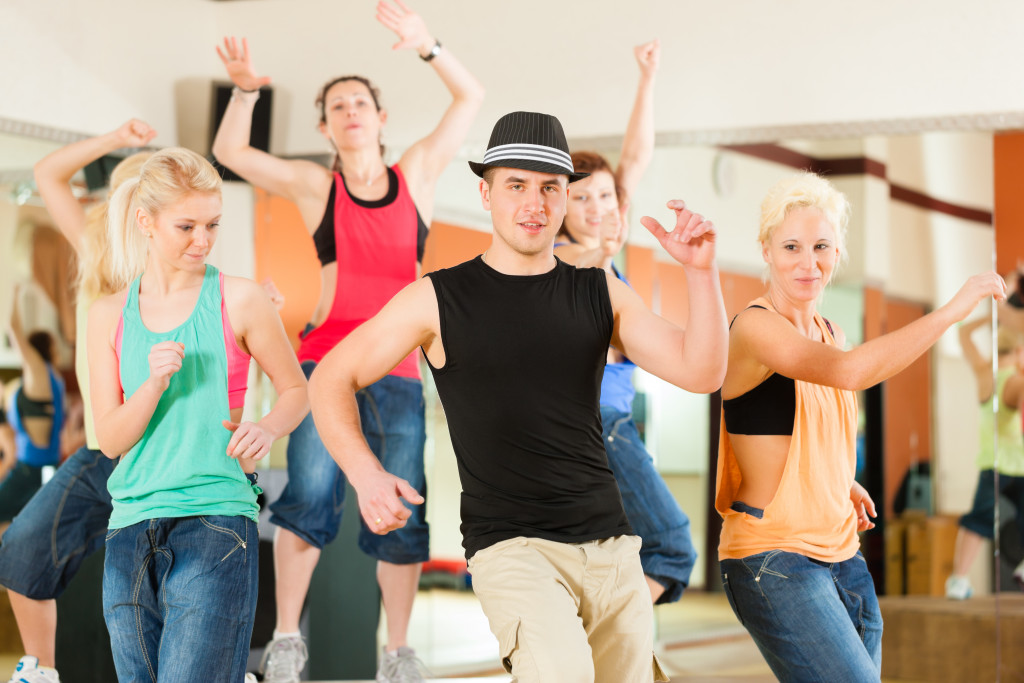Dancing is one form of dynamic art that requires no mechanical tool other than your own body. To be good at it is to master projections that will flatter your body line and exude utmost grace no matter the genre of the accompanying music. Such an art form does not cease to evolve with the times.
Anyone endowed with dancing talent is enviable. Every learned move and routine makes the craft more exciting by the day. Still, for any dancer to pursue the dream for the longest time possible, they must care for their only instrument: their body. But no one is truly immune from bodily injuries.
Pain is part of the learning curve, which is more felt in the dancing profession. If you aspire to go pro from your frequent dancing gigs, you have to know this fact. Here, then, are injuries you will more or less be prone to during your journey:
Spinal Discs
Sandwiched in between the vertebra of the spinal cord are rubbery tissues called discs, which serve as cushions in between bony material and assist in the safe bending and turning of the spine. When excessive force is applied in a movement, the disc’s core will swell and slightly stick out beyond the vertebra’s diameter. This inflammation commonly happens somewhere in the hip area, the crucial linking point between the torso and the lower extremities.
Dancing involves dynamic moves that sometimes require the torso to turn the direction opposite where the legs are facing or when shifting one’s center of gravity from, say, the knees to the waist. That said, slipped or herniated discs are a common occurrence among dancers. It initially presents itself as numbness on either side of the body which gradually accelerates to a stinging pain from the waist up and waist down.
The pain jolts specifically during moments of rising from a seated or supine position. And it can get so bad that turning the upper body becomes a difficult task. Many people brush the pain off, often opting for topical pain relief until it no longer manifests, only for it to relapse, this time worse, when resuming strenuous activity. That is because they never healed and had their lower hips checked during the first onset.
If improperly treated, herniated discs can advance into nerve damage. The early remedy doctors usually prescribe is a combination of nerve pain-relieving and muscle-relaxing medications. Stretching is something you can proactively do while healing. If your condition worsens, the doctor will assess whether yours will pass for a surgery case wherein they will remove the bulging portion of your swollen disc. If not, replace it with a disc made of medical-grade plastic and lined with metal.
Knee
Some dance moves are more complex to require you to bend your legs in less conventional ways. Dancers do not mind doing them until they sprain their knee, which renders them unable to walk properly for days. Those who are years into the game know a good bandage wrap around a pain relief ointment-smeared knee will do the trick, and so they can bounce back in no time.

But medically speaking, this quick remedy is not recommended because the knee joints retain more fluid than necessary and, in turn, can cause unnecessary pressure on the knees’ synovial membrane. This only causes irreparable damage to the body part, such as experiencing a squeaking sensation when bending one’s knees or chronic pain, especially when the legs perform intensive movements. As first aid, it is always best to elevate the affected leg to drain blood and fluid and apply a cold compress. In turn, you can prevent the worst inflammation.
Many dancers also discount the importance of protective gear such as elbow and knee pads. If you are yet to make dancing part of your daily routine, better invest in a good set of these PPEs. You don’t know when you will have to kneel or lie down in the routines you will learn.
Ankle
Injuring the ankle can be as easy as making a wrong footstep or jumping on the wrong foot. If this happens, you can sprain your ankle or, worse, fracture it. As a dancer, you should mentally note that your ankle houses the Achilles tendon, the largest among all bodily tendons.
That is why you should not wear just any pair of shoes; instead, use a durable pair of shock-proofing running shoes and pair them with compression socks. Foot and ankle specialists also recommend wearing arch supports to absorb pressure from various parts of the foot, including the ball and the sole.
Conclusion
Just like in any other profession, dancing requires you to provide non-stop care to your body. Warming up and stretching the body should be part of your SOPs before dance rehearsals. You should also eat properly and listen to when your body is calling for rest.

